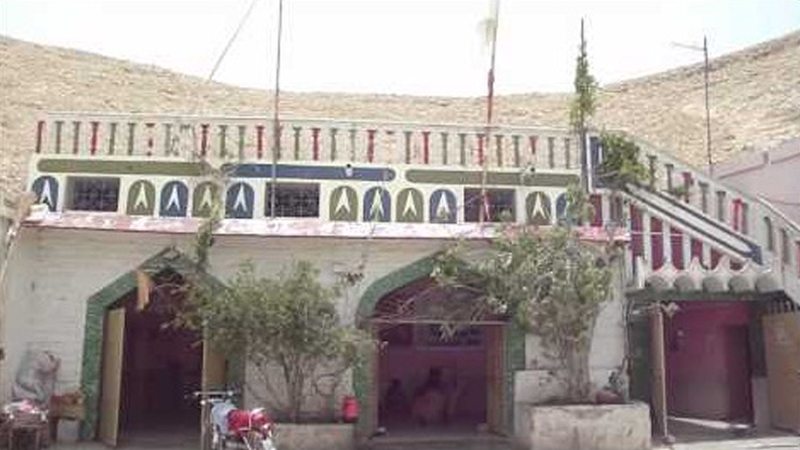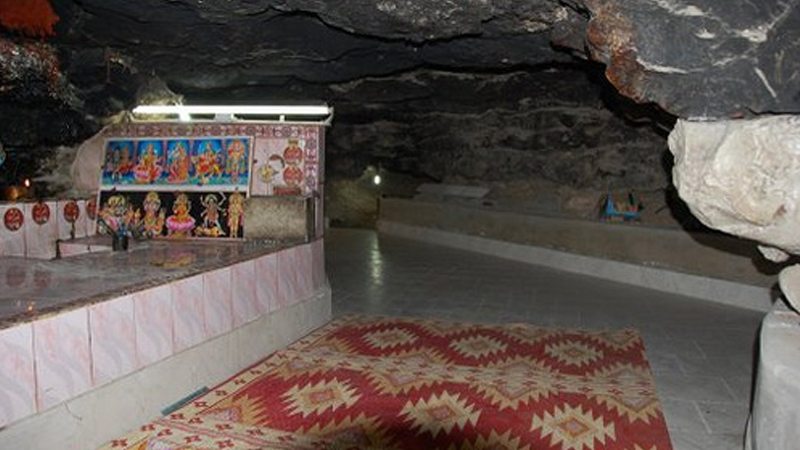Sindh harbours some remarkably old Hindu and Jain temples, paralleling Sufi shrines in their spiritual aura. Sukkur exudes a remarkably rich and diverse history; one can explore Sufi shrines, Hindu temples and famous mosques all the way from Sadho Belo, Masoom Shah Jo Munaro, Tomb of Seven Sisters and Asthan of Kalka Devi etc. All of these are historic places with myths and romance surrounding their valor and glory.
I personally believe that the Sukkur district exemplifies a message of interfaith harmony as religious intolerance has barely made a dent in Hindu-Muslim brotherhood over here. They live, eat, and work together, because according to them, it is in their culture.
 There are almost 600-700 worship temples located all across Sindh. While moving out from Sukkur, almost 23 kilometers away from Sadh Belo Temple, exists the ‘Asthan of Kalka Devi’. Arror Rock is an amazing shaped rock; as the tale goes, when Mohammad Bin Qasim came to conquer Sindh in AD 711, Arore was the residence of King Dahir. Presently, there are ruins of the Bin Qasim Mosque built by Muhammad Bin Qasim himself in that era. Many historians as well as writers are of the view that this Mosque was the first-ever built in the subcontinent, but through my words I want to make it known that the first mosque was built in 8th century AD in Thatta after the conquest of Sindh by Arab warrior Muhammad Bin Qasim.
There are almost 600-700 worship temples located all across Sindh. While moving out from Sukkur, almost 23 kilometers away from Sadh Belo Temple, exists the ‘Asthan of Kalka Devi’. Arror Rock is an amazing shaped rock; as the tale goes, when Mohammad Bin Qasim came to conquer Sindh in AD 711, Arore was the residence of King Dahir. Presently, there are ruins of the Bin Qasim Mosque built by Muhammad Bin Qasim himself in that era. Many historians as well as writers are of the view that this Mosque was the first-ever built in the subcontinent, but through my words I want to make it known that the first mosque was built in 8th century AD in Thatta after the conquest of Sindh by Arab warrior Muhammad Bin Qasim.
A mile away from this Masjid in Rohri hills, there is a historic temple which contains a mountainous cave called the Kalka Devi temple; one can see Kalka Devi’s sculptures, oil lamps and can smell its incenses inside it. This temple is tagged with the Hindu Goddess Kali. Kalka means power in Shashthi language. Historians are of the view that Kalka was a religious woman who used to live in the cave and the hills during the Roe Dynasty. The majority of Hindu devotees pay homage to Kalka Devi on the night of the first Monday of every month. However, during the nine-day Hindu festival, in spring and autumn, devotees gather and sing various hymns and songs praising the Goddess Durga in a large organized fair.
I had a chance to explore the cave. Its low roof, ash grey caved walls and strong, sweet smell of burnt incense (agar bati) provides the perfect atmosphere to sit, pray and reflect. There is a room on the other side of the cave that leads to the main hall where food is served three times a day.
 Many rooms have been built around the original temple in the cave, some for prayers and others for accommodating visitors who flock in thousands at the time of Hindu festivals. From one of the rooms a five to six feet high entrance leads to the cave. The smell and the smoke of agar batis (incense), creates a mystical aura around the area. Moving further into the temple, I had a chance to mingle with a few people involved in discussions over it. I was amazed to see that within this temple one can see a large number of Hindus and more importantly, a massive number of Muslims visiting it frequently.
Many rooms have been built around the original temple in the cave, some for prayers and others for accommodating visitors who flock in thousands at the time of Hindu festivals. From one of the rooms a five to six feet high entrance leads to the cave. The smell and the smoke of agar batis (incense), creates a mystical aura around the area. Moving further into the temple, I had a chance to mingle with a few people involved in discussions over it. I was amazed to see that within this temple one can see a large number of Hindus and more importantly, a massive number of Muslims visiting it frequently.
Many rooms have been built around the temple, some for prayers and others for accommodating visitors who flock in thousands at the time of Hindu festivals. From one of the rooms, a five to six feet high entrance leads to the cave. The smell and the smoke of agar batis (incense) creates a mystical aura that surrounds the area
Sadly, like many others, this temple is in pathetic condition. Hereby, I want to request the district administration and the adviser to the Sindh Chief Minister on Minority Affairs to take some concrete steps for saving such historic monuments. Last but not least, my very strong message to the western world and even to the local tabloid intellectuals settled in Islamabad or Lahore, is that if you think the Province of Sindh is all about bombing churches, destroying temples, the feudal system, slaughtering religious minorities, honor killings and forced conversion, I would request you to visit District Sukkur or Rohri, at least once.
 Many rooms have been built around the original temple in the cave, some for prayers and others for accommodating visitors who flock in thousands at the time of Hindu festivals. From one of the rooms a five to six feet high entrance leads to the cave. The smell and the smoke of agar batis (incense) creates a mystical aura that surrounds the area.
Many rooms have been built around the original temple in the cave, some for prayers and others for accommodating visitors who flock in thousands at the time of Hindu festivals. From one of the rooms a five to six feet high entrance leads to the cave. The smell and the smoke of agar batis (incense) creates a mystical aura that surrounds the area.
The writer is a social and political activist based in Lahore. He can be reached at salmanali088@gmail.com and tweets at @Salmani_salu
Published in Daily Times, November 9th 2017.